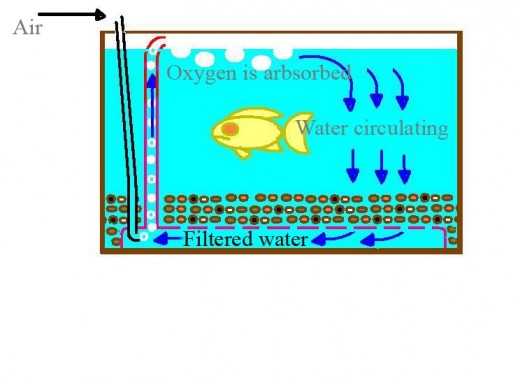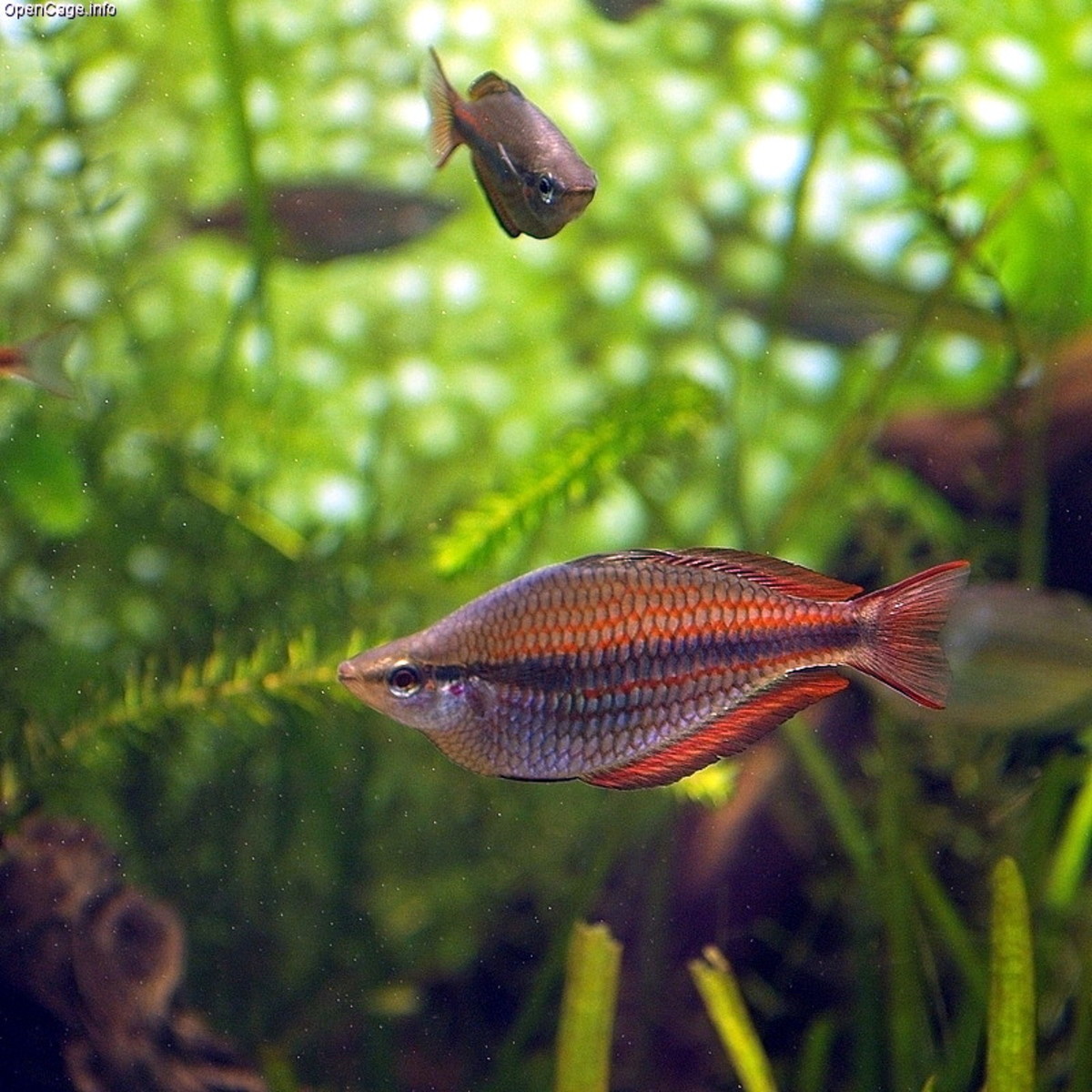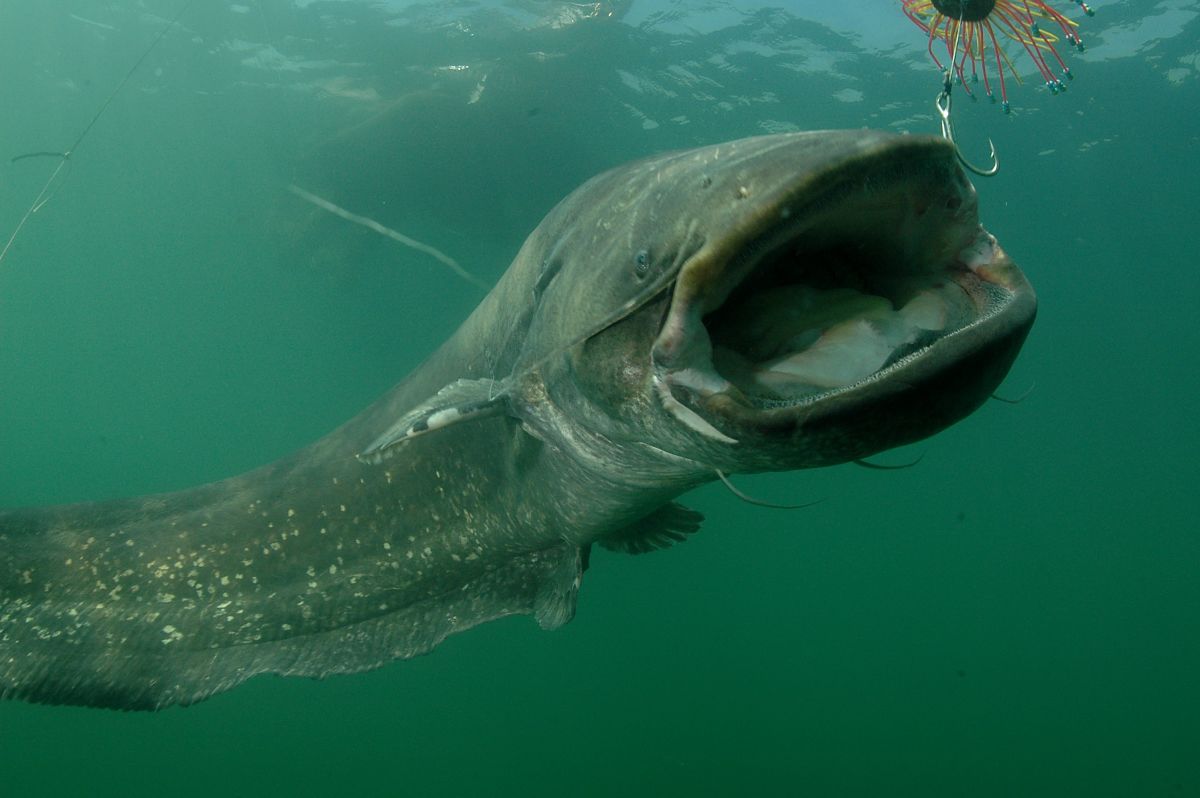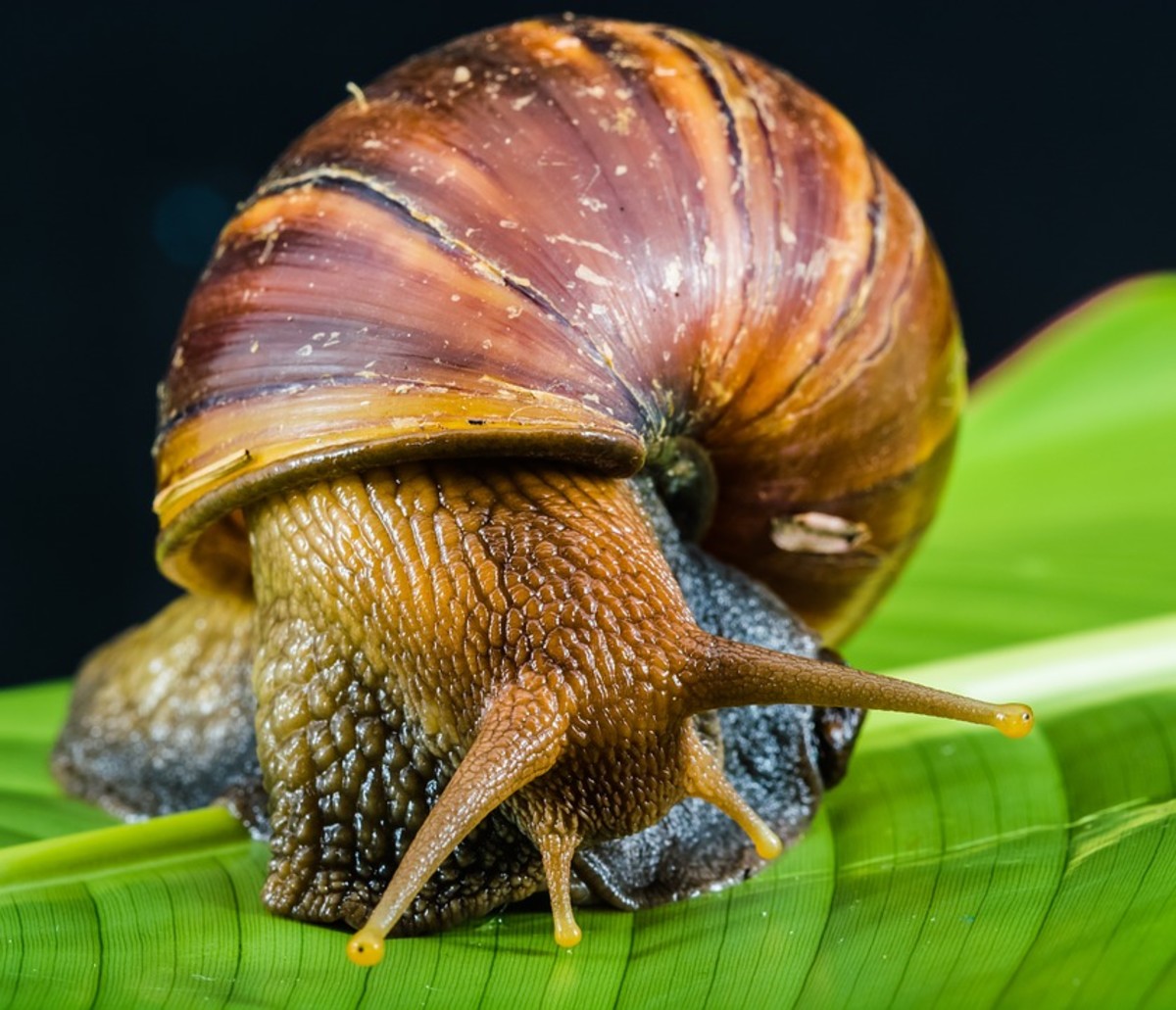How to Clean a Fresh Water Aquarium Efficiently

Cleaning an Aquarium Without Tears
Cleaning an aquarium should provide you with as much fun as seeing lively fish swimming about. I believe strongly that the water in the aquarium should be so crystal clear that in the absence of another source of water one could readily fill a glass and drink it. Honestly! If you wouldn’t touch it with your tongue, then your fish should not be living in it.
The process I will describe assumes that you have an under-gravel filter, which is my favorite. In case you have another kind, you may find a way to adapt the method your kind of filtration system.
Caution with Electrical Gadgets in Your Aquarium
Before you start handling water, switch off the pump and any other electrically operated gadgets in your aquarium. People who experience cold winters use heaters for tropical fish. These should be removed completely to a safe area during the cleaning process. Incidentally for those in the tropics who have installed heaters in their aquariums, they are not needed and are a waste of money. Fish, being cold blooded easily adapt to the warm temperatures in the tropics. A cold season in the tropics will rarely fall below 18 degrees centigrade.
Change Only 20% of the Water in Your Aquarium
Do not make a habit of changing more than 20 % of the water. The fish will hate you for adjusting their climate too drastically. To estimate 20% of the water, measure the distance from the top water level to the gravel surface and divide by five. Put a mark with a felt pen or tape on the lower fifth, above the gravel. All the water from the surface of the gravel to the mark is 20% of all the water in the tank and this is the water you want to throw out. This is an estimate really because the gravel is soaked in water, but we are assuming here that the water in the gravel is a negligible amount. All the water above that mark is 80% and that is the water you want to retain. How do you remove the lower 20% and leave the upper 80%? Remove it the *0 % by Siphoning into a bucket, taking care not to stir the filth in the bottom of the tank. Place a finger on the end of the siphoning tube so that you can close it if a fish wonders too close, otherwise it will be sucked into the tube if it is small enough. Before you get to the mark that indicates when to stop siphoning, remove the fish one by one and add them to the water that is to be retained in a bucket. Siphon the rest of the water into the bucket that now has fish and leave your 20% of unwanted water in the tank. You must do this operation as fast and gently as you can without stirring the dirt too much. You want the fish to be in 80% crystal clear water in the bucket for now.
Clean the Gravel in the Aquarium with the 20% Disposable Water
Remove all the plants, ornaments and rocks and put them in another container. Now you are ready to clean the gravel. Agitate the gravel by stirring it up and moving it from left, and then to the right. Your objective is to get all the fish waste, filtered dirt and leftover food suspended in the water. When the water has all it can take, push the gravel to the left, or right and pile it high. All this time you are making sure that your under-gravel filter is not moved up or damaged. Under-gravel filters should not have gravel under them, so if this happens you will have to empty the tank and reset. This you do not want to do, so be careful as it will take you a long time. Once you have all the water out, pour some rinsing water and repeat the process. Remove this rinsing water and push back the gravel to its natural level.
If you have plastic plants, clean them with a soft brush at the sink, or in a bucket. If the stones have a lot of algae, clean them with a course brush. If they do not look dirty, clean them anyway.
Next, clean the inside of the tank with a fabric. Do not use any soap or detergent as such chemicals will poison you fish. There will always be some form of slimy algae even if not very conspicuously. Clean the outside of the tank as well. Now you are ready to put back the residents. But before you put them back, clean the glass cover and place it inside the tank in a slanting position. Put back half the water by pouring it on this slanting glass. This will control the stirring up of the gravel. You can also put a bowl on the gravel and pour the water into it to absorb the shock.
An Aquarium with Superb LED Lighting

Last out first in - Replace in Reverse Order
Put the plants, stones and ornaments in reverse order, starting with what was removed last. Anchor the plants properly and arrange the rocks and ornaments to bring out all the beauty in them. Use your net to put the fish in and follow that action with the rest of the water. This is the 80%. Remember you have not put fresh water yet. You have only cleaned the gravel and thrown out the dirty 20%.
Chlorine is Not Good for the Fish’s Gills
Now this is when you put in the fresh 20%. It needs to be really fresh and not too different as far as temperature is concerned. It shouldn’t have chlorine either. Most cities add chlorine to kill germs in public water systems. There are three ways of removing chlorine:
1. Allow the water to just sit in an open bucket for three to four days. Chlorine turns into gas and escapes.
2. Boil the water and let it cool. Chlorine turns into a gas due to the heat and escapes.
3. Buy a ‘Dechlorinating agent' from your pet store – put the drops recommended per gallon and the chlorine will be released instantly.
I prefer the first option though I have used all the three methods under different circumstances. If the water has been sitting in the same house as the fish tank, it will also be more or less the same temperature as the water in the tank. Fish do not like too big a change in temperatures very suddenly. It is okay if the temperature change is gradual.
If you use the second option, you will need to let the water sit before use so that the temperatures of the newly dechlorinated water and that in the fish tank can equalize. That could take a while. One way to make the fish acclimatize fast to water that is a different temperature is to put the fish in a polythene bag with its old water, seal the bag and then float it on the surface of the new water. The temperature in the paper bag and that in the bigger body of water will soon equalize after a half an hour or so and the fish can be released.
Now that you have a clean tank in about forty minutes, look forward to the next cleaning process after 14 days. Stick to this biweekly rhythm and you will get better and more efficient with time.
A Good Aquarium Requires a Good Pump

- Fish Tank: how to make your own aquarium
If you have always wanted to have a fish tank, here’s how to make your own. The larger the tank, the better for the fish. But you need to start with a manageable size until you have sufficient experience to maintain a large one. Making a small or lar
This content is accurate and true to the best of the author’s knowledge and is not meant to substitute for formal and individualized advice from a qualified professional.
© 2012 Emmanuel Kariuki



